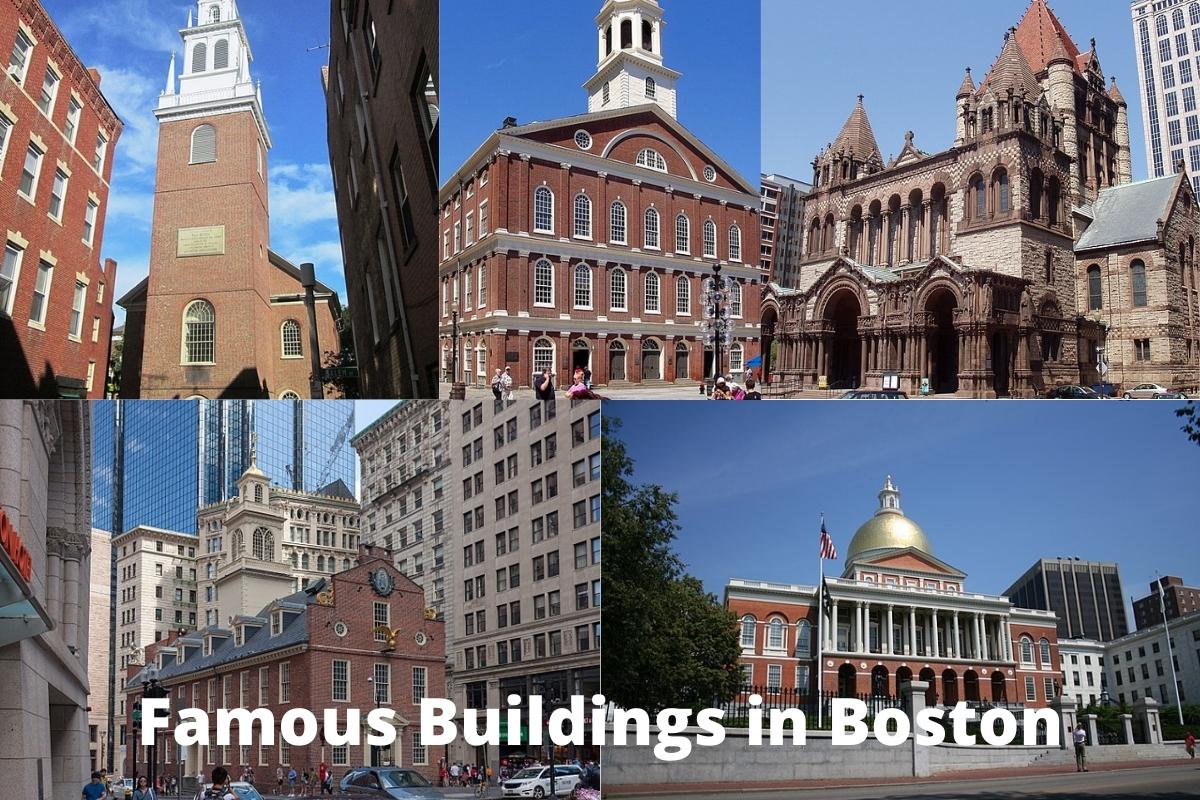Puritans were the first immigrants to what is now Boston. They also introduced English architecture, which, when combined with other designs like Georgian, developed into the distinctively American colonial look.
The Old State House, and Paul Revere House are examples of structures that were designed in this style. Here are some of the most famous buildings in Boston that still take your breath away.
Famous Buildings in Boston
1. Old North Church
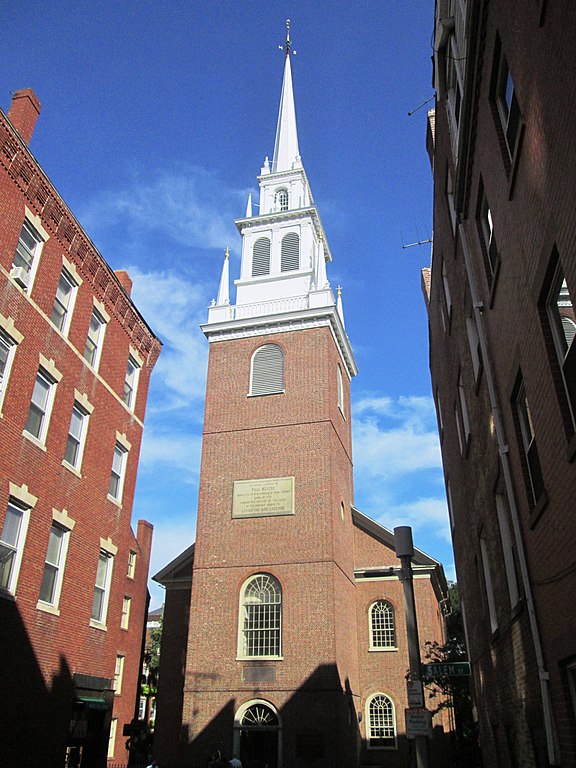
The famed “One if by land, two if by sea” signal is claimed to have been given from Christ Church in the City of Boston, now called Old North Church.
The expression refers to the midnight ride made by American revolutionary hero Paul Revere on April 18, 1775, before the Concord and Lexington Battles.
Also Read: Landmarks in Boston – 10 Most Famous
The church was founded as a project of the Massachusetts Episcopal Diocese. It opened in 1723 and is now a National Historic Landmark as well as the oldest continuously used church in Boston.
There is a bust of George Washington within the chapel, which is said to be the best depiction of the initial president, Gilbert du Motier, that the Marquis de Lafayette had ever seen.
2. Faneuil Hall
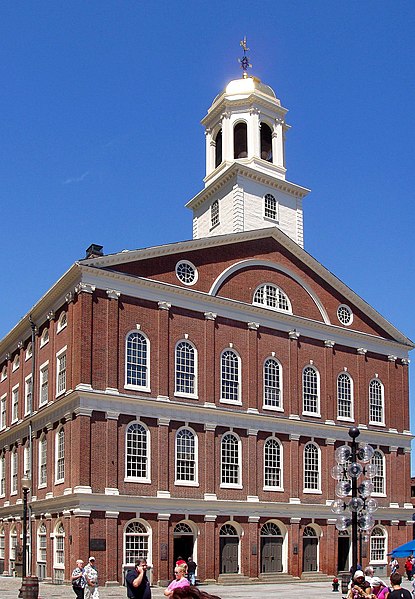
Faneuil Hall is a public square and marketplace in Boston, Massachusetts, close to the harbor and the current site of the state government.
After its opening in 1742, many revolutionaries used it as a platform to advocate for independence from Britain, including Samuel Adams and James Otis.
Also Read: Landmarks in Massachusetts
It is now a major attraction along the Freedom Trail and a section of Boston National Historical Park.
Despite being called “the Cradle of Liberty,” this site and its surrounding area have deep roots in the institution of slavery. Forbes Traveler ranked Faneuil Hall as the fourth most popular tourist attraction in the United States in 2008.
In 2007, the clapper on the bell was frozen, thus the repair involved spraying it with WD-40 for a week and then attaching a rope.
Before this restoration, the bell hadn’t been rung with its clapper since the end of World War II in 1945; nevertheless, it had been rung multiple times by striking it with a mallet.
3. Massachusetts State House
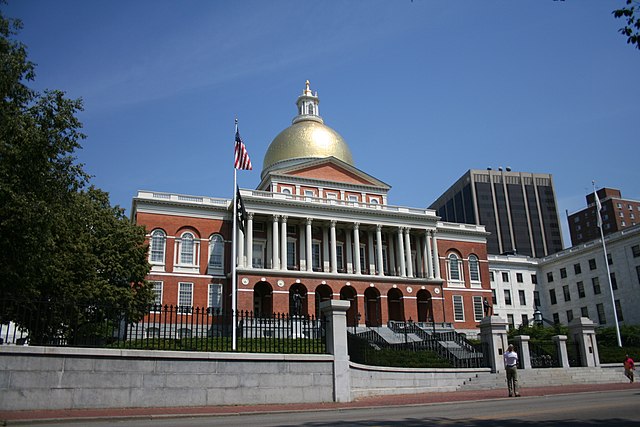
The Massachusetts State House in Boston’s Beacon Hill area serves as the state capital as well as the government’s seat for the state.
The state legislature along with the executive offices of the Commonwealth of Massachusetts are located here.
The edifice, which was built by architect Charles Bulfinch and finished in January 1798 for $133,333 (almost five times the budget), has been significantly expanded on multiple occasions since then.
It’s a historic building and among the oldest state capitals still in operation today. For its architectural significance, it was named a National Historic Landmark and is widely regarded as a masterpiece of Federal architecture.
4. Trinity Church Boston
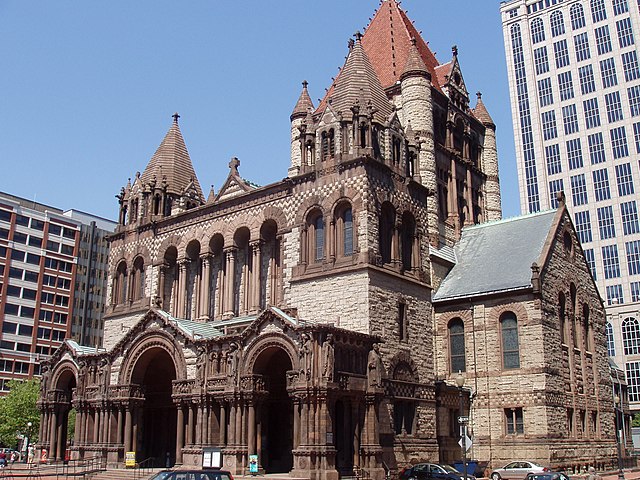
The Episcopal Diocese of Massachusetts has a parish called Trinity Church in the City of Boston, which may be found in the Back Bay area of Boston. Founded in 1733, the community has grown to include over 4,000 families.
A 64-meter (211-foot) tower serves as the focal point of the building’s modified Greek Cross layout.
Trinity was constructed in the Back Bay of Boston, which was once a mudflat. It is supported by 4,500 wooden piles, each of which was powered by 30 feet of clay, silt, and gravel fill.
After the Great Boston Fire of 1872 destroyed the original church on Summer Street, the present-day structure was built under the guidance of Rector Phillips Brooks (between 1835 and 1893).
Its more than 21,500 square feet (2,000m²) of murals were painted solely by American artists.
5. John Hancock Tower
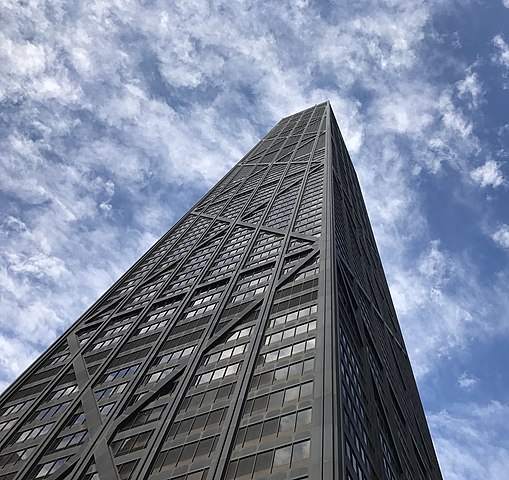
The 60-story, 790-foot 200 Clarendon Street skyscraper in Boston’s Back Bay was formerly known as the John Hancock Tower.
Its height makes it the New England region’s record holder. Henry N. Cobb, of the firm I. M. Pei & Partners was responsible for the tower’s design, which was finished in 1976 as New England’s tallest structure.
An investigation has shown that the entire structure could topple under certain wind loads, therefore the building’s structural weaknesses are well-known.
Also Read: Buildings in Seattle
The building received two awards from the American Institute of Architects: a National Honor Award in 1977 and a Twenty-five Year Award in 2011.
200 Clarendon Street is the physical address, whereas “Hancock Place” is the mailing address used by those who work in the building.
John Hancock, whose signature appears large and prominent on the Declaration of Independence, inspired the original name of the tower; the phrase “a John Hancock” is now commonly used to describe a signature.
6. Old State House, Boston
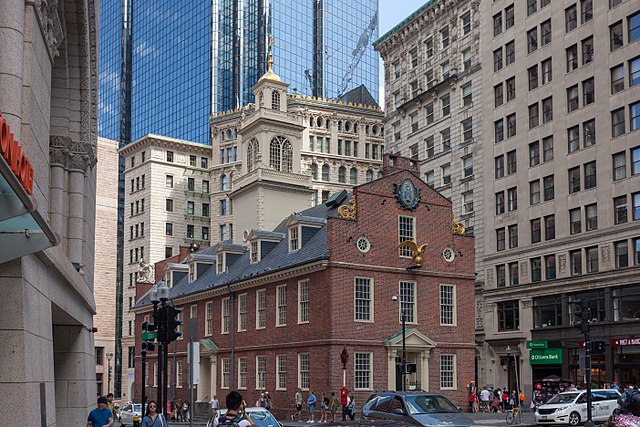
In Boston, Massachusetts stands a historical structure known as the Old State House. The Massachusetts State House was constructed in 1713 and served as the state’s judicial center until 1798.
It’s one of the oldest government structures in the country, and it sits at the crossroads of State and Washington Streets.
The oldest public building in Boston is currently a history museum run by the Bostonian Society (which existed from 1824 to 2019) and is one of the stops on the city’s famous Freedom Trail.
The Bostonian Society and the Old South Association amalgamated on January 1, 2020, to establish Revolutionary Spaces.
Also Read: Buildings in Philadelphia
In 1960, it was declared a National Historic Landmark, and in 1994, the Boston Landmarks Commission designated the Old State House as one of the city’s most significant historical sites.
It is located above the State Street MBTA subway station, which is accessible via the underground passageways of the Blue and Orange lines.
7. Paul Revere House
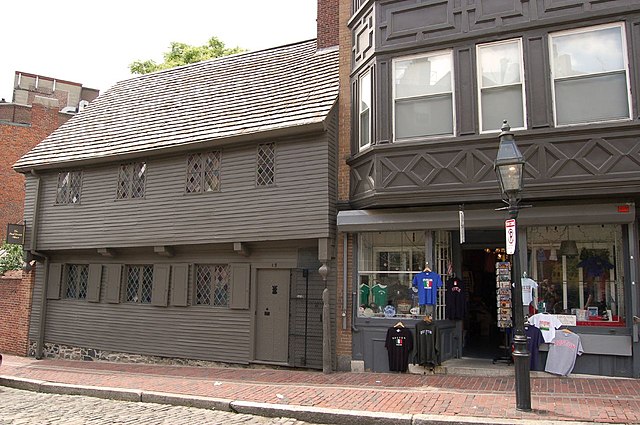
Throughout the American Revolution, American hero Paul Revere called the Paul Revere House, a colonial structure constructed around 1680, home.
Formerly a private residence, the Paul Revere Memorial Association has turned the building at 19 North Square in Boston, Massachusetts into a public museum since it was designated a National Historic Landmark in 1961.
The original three-story structure dates back to around 1680 and is the oldest surviving home in Boston’s historic district.
It was built on the site of the parsonage for the Second Church of Boston, where Increase Mather and Cotton Mather had lived before its destruction in the Great Fire of 1676. Robert Howard, a successful slave trader, was the building’s initial owner.
His L-shaped townhouse had roomy interiors and could have benefited from a second-story overhang and casement windows.
The Paul Revere Memorial Association completed a 3,500-square-foot visitor and education center in December 2016, with an elevated walkway connecting it to the house.
8. Bunker Hill Monument
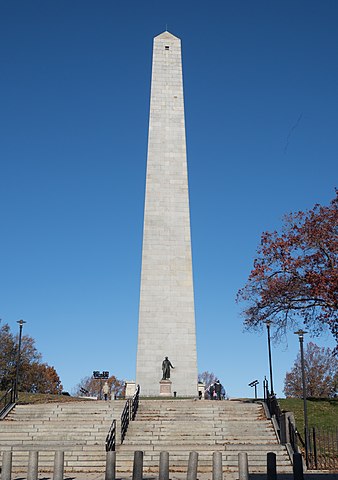
This monument honors the site of one of the earliest important engagements of the American Revolutionary War, which took place there between the Patriots and RedCoats in the city.
The granite obelisk which stands 221-foot was built in Charlestown, Massachusetts between 1825 and 1843 using granite transported from nearby Quincy via the purpose-made Granite Railway and then by barge. The ascent consists of 294 steps.
Near the monument’s base is an exhibit lodge constructed in the late 19th century, where a statue of the martyred Dr. Joseph Warren can be found. As a section of Boston National Historical Park, Bunker Hill is one of the stops along the Freedom Trail.
In 2007, after a $3.7 million refurbishment that included repairs, handicap accessible upgrades, and new lighting, the monument reopened to the public. Across the street, in June of that year, the Bunker Hill Museum opened with a focus on the conflict. Both the museum and the memorial are free to enter.
9. Prudential Tower
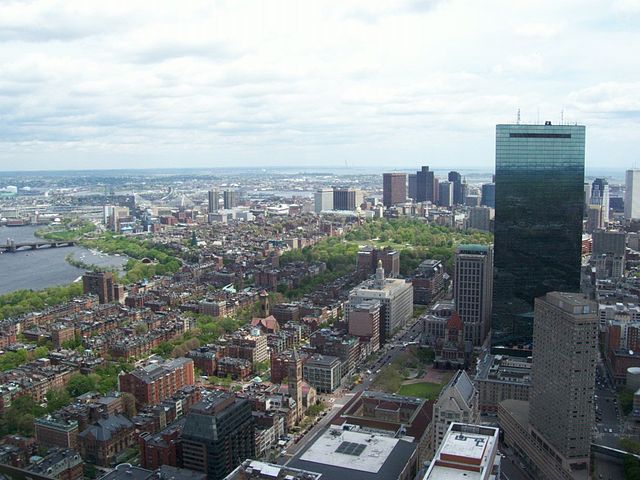
The Prudential Tower in Boston, Massachusetts is an International Style tower popularly called the Prudential Building or, more commonly, The Pru.
The Prudential Center building is the second-tallest structure in Boston, after the former John Hancock Tower at 200 Clarendon Street.
Charles Luckman and Associates were commissioned by Prudential Insurance to design the Prudential Tower. The 52-story, 749-foot-tall (228-meter-tall) structure was completed in 1964, making it one of the nation’s 114 highest buildings at the time.
A total of 110,000 square feet (1,230,000 square feet) of retail and office space can be found there. Towering at a total height of 907 feet (276 m) when including its radio mast, it is Boston’s highest structure.
Since the terrorist incidents of September 11, 2001, the John Hancock Tower’s (now 200 Clarendon Street) upper viewing platform has been shuttered, leaving a 50th-floor observation deck as the highest such facility in New England accessible to the public.
10. Isabella Stewart Gardner Museum
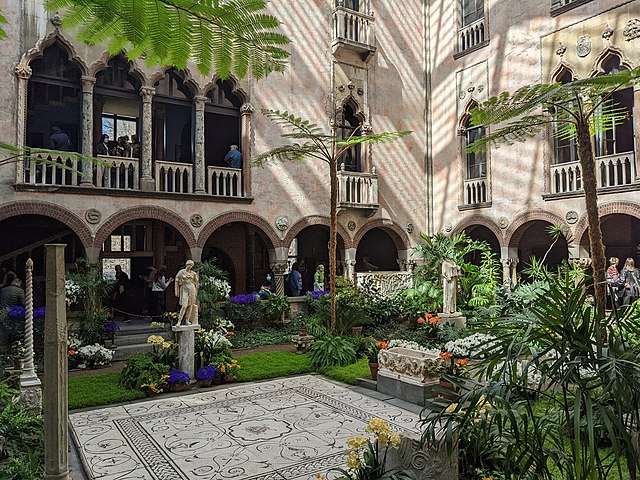
The Isabella Stewart Gardner Museum in Boston, Massachusetts is home to important works of art from Asia, Europe, and the United States.
It houses a wide variety of artworks, such as tapestries, sculptures, paintings, and decorative arts.
To fulfill Isabella Stewart Gardner’s final wish that her paintings be displayed “for the instruction and entertainment of the public forever,” she established this museum.
The museum’s architecture, inspired by a Venetian palace from the 15th century, creates a dramatic backdrop for Gardner’s original work.
To house her expanding art collection, Gardner commissioned architect Willard T. Sears to create a structure near the Back Bay Fens’ wetlands.
The museum’s three stories of exhibit space wrap around an interior courtyard garden that thrives throughout the year.
The museum was officially recognized as a historic site by the Boston Landmarks Commission in 2013. In 2012, a companion wing was built next to the primary building by the Back Bay Fens.

